Why Using Cruise Control In The Wet Will Actually Help You
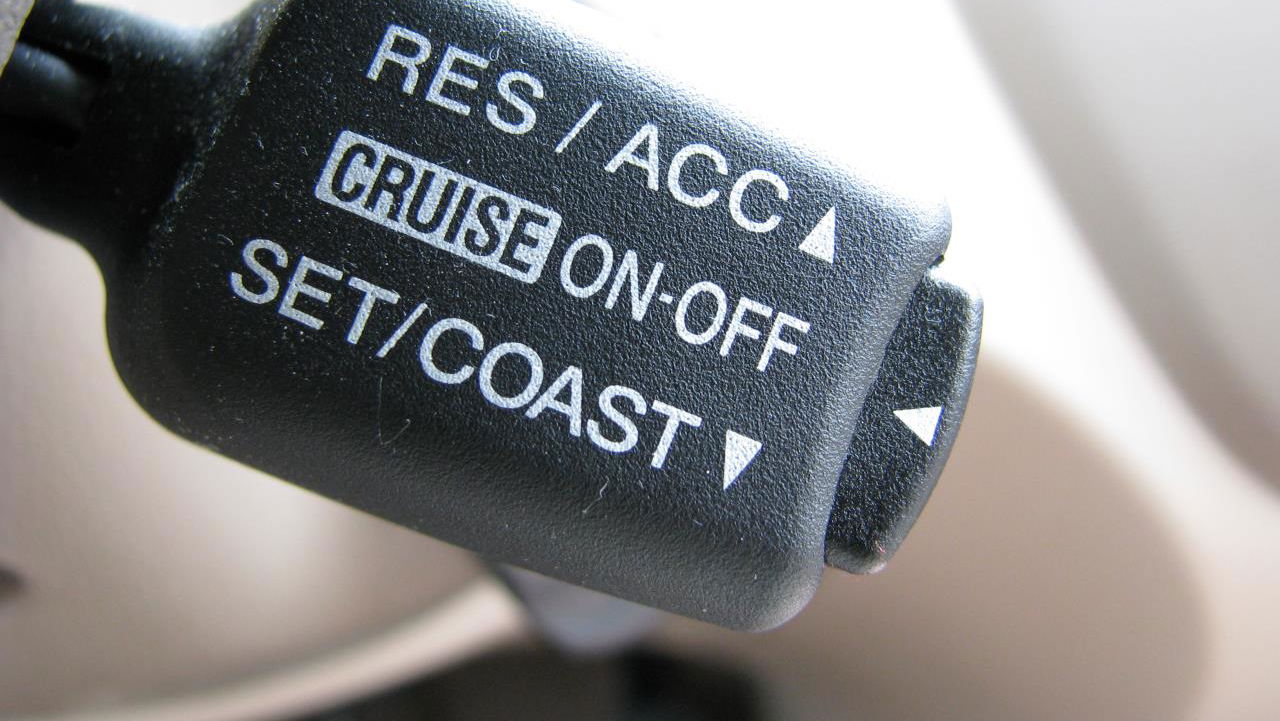
Cruise control has been a staple of motoring for over 50 years, being pioneered by the 1958 Chrysler Imperial as an ‘Auto Pilot’ function. But is it safe to rely on cruise control technology to take over and let you sit back and relax in the wet?
Myths of cars suddenly accelerating and causing large accidents due to a rogue cruise control system in the rain float around the internet and populate forums, pleading with the general public to avoid the lazy option of driving at all costs.
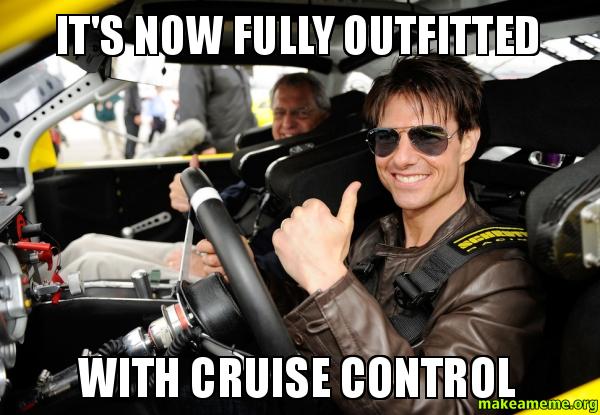
Most cruise control systems are switched off by manual inputs from the driver, be it through the brake pedal or throttle. This input breaks the electronic circuit that has been keeping the car’s speed constant and reverts back to manual speed control. Now think about the input needed to break that circuit in a scenario like a skid or aquaplane incident.
Braking or accelerating during a skid can cause the vehicle to become even more unsettled by throwing the weight of the vehicle forward and getting you in a larger heap of bother. And to understand exactly what’s going on, we need to look into the frictional interaction between the tyres and the road.
Friction occurs naturally when two substances come into contact with each other, and the force that this friction creates is found by knowing the coefficient of friction and the vertical force acting downwards into the surface, known as the ‘normal’ force.
The four wheels act as the points of contact between the car and the road and therefore the friction force is applied through these contact patches. The force produced by the friction of the tyres on the road is called the ‘rolling resistance’ and can be summarised by the following equation:

Now, more about the coefficient of friction. Denoted by the symbol ‘µ’, a high coefficient will mean the potential for a large friction force. As an average, tarmac generally has a ‘COF’ of 0.7 when dry. Predictably, rain on a road surface decreases that value down to around 0.4. This decrease in COF results in a decrease in friction between the tyres and the road leading to an inherent lack of control.

Now back to the cruise control. To keep a car travelling at a constant speed, a feedback loop transmits the car’s speed through to the ECU which will then adjust the throttle.
Let’s say you are on the motorway and then suddenly begin to lose control in the wet with cruise control on. The car is set up to keep proceeding at the speed chosen by the driver. And here enters the dangerous part. You’ll want to disengage the cruise control so that you can slow down so your immediate reaction may be to touch the brake pedal to break the circuit and take manual control of the car.
By hitting the brakes firmly in the wet conditions, you run the risk of locking the brakes which has an even larger effect on the coefficient of friction. By locking the wheels, only one constant area of tyre is in contact with the road, allowing the water to quickly lubricate the contact patch which can lead to a dangerous aquaplane. Unlike normal ‘rolling’ braking where the tyre contact patch is constantly being refreshed as the wheels are turning, a locking situation causes the coefficient of friction to plummet to an estimated 0.1-0.2, almost completely negating the driver of any form of control.
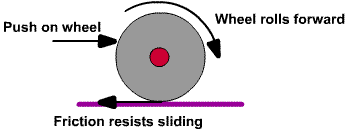
Thankfully, cruise control measures wheel speed as its primary input. As a car aquaplanes, the wheels will suddenly spin faster due to a lack of resistant friction so the control system will send feedback to the cruise control system to decrease throttle to try and match the original wheel speed before the skid. So essentially cruise control should try and reduce the effects of the uncontrollable skid rather than enhance them. Really, the ideal course of action is to try and steer into the skid with your feet fully off the pedals until traction is found again, in which case the brake can then be applied to disengage the cruise control and slow the vehicle to a safe speed.
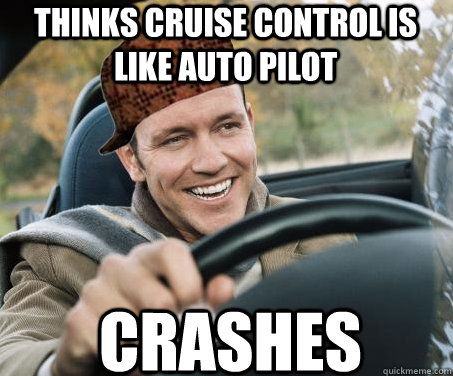
The RAC and other highway agencies will tell you to never use your cruise control in wet or icy conditions and they definitely have a point. It is always best practice to be in full control of your car in case of something like an aquaplane scenario. In terms of outright safety however, cruise control should actually help your car control itself in what can become a very serious situation.
So myths of cruise control making cars take off uncontrollably into motorway barriers? Absolute tripe.
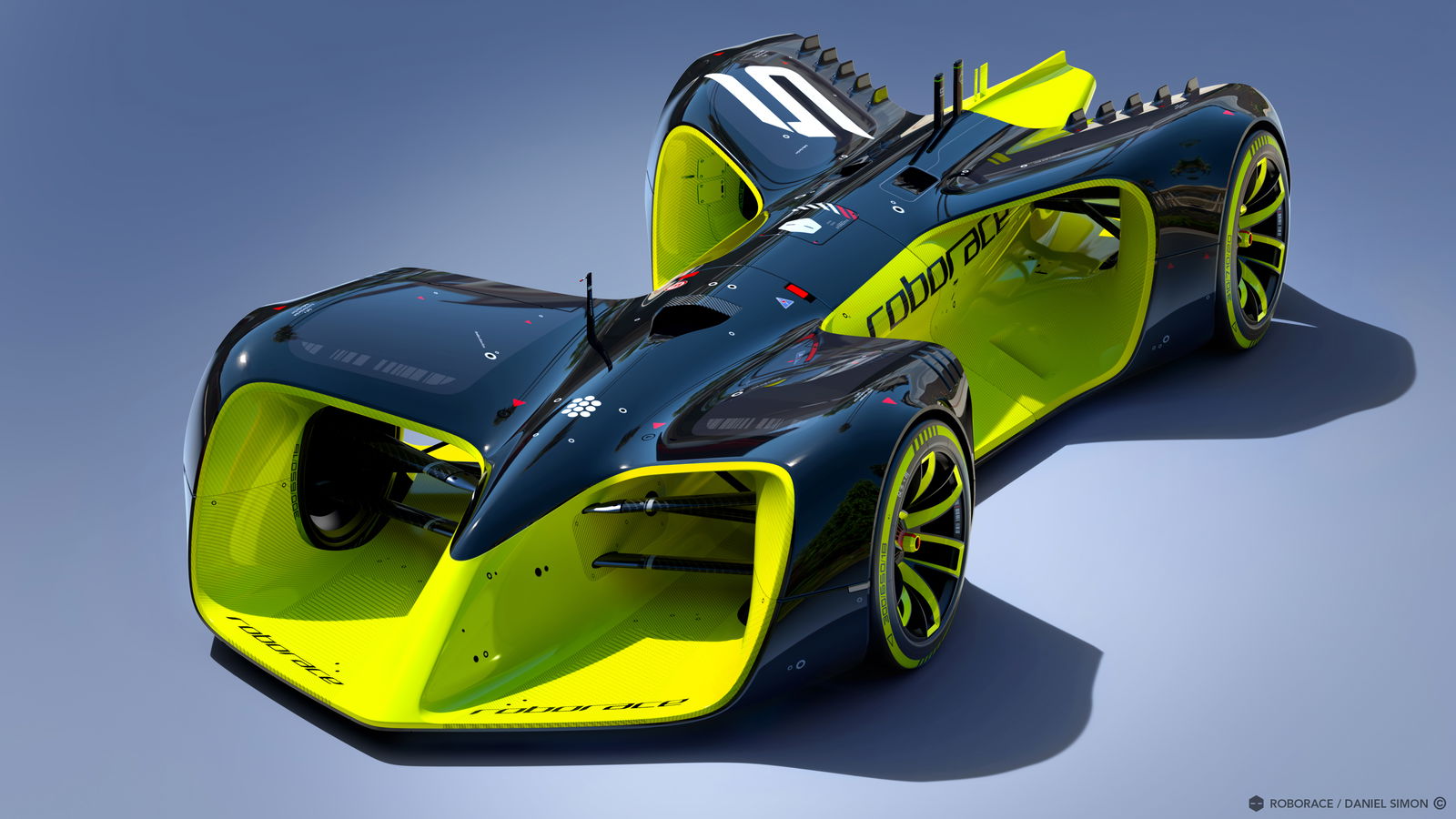

Comments
I would think that most modern cars with traction and stability control systems would disengage CC as soon as a loss of traction event occurs.
I enjoy driving across the country in manual over anything. Last year I had a 12 hour NON-stop trip to visit family, and I believe I would have had big issues staying awake if I was driving with an auto or using Cruice control.
CC is usefull if you are drivng much on highway, but in the city its absolutely useless
Are you people actually trying to get others killed?
Everything about this article is wrong, wrong, wrong.
So cruise control is extremely basic, it maintains speed, which it reads from the ecm, by adjusting the throttle. If you hit a puddle or a slippery spot, and the driven wheels start to spin because of loss of traction, the ecm won’t read that because most cars use a non-driven wheel for speed measurement, so it thinks it’s still slowing down, and just opens the throttle further to maintain speed. So now you’re drifting, the car is flooring it, and God help you if you don’t know how to stay in control. Modern cars with TCS (typically but not always) shut off the Cruise when a slip is detected, making sure you don’t accidentally die because you wanted to “leave cruise on to be safer”.
Also as far as locking your brakes… Well that’s why you either just tap the brakes to disable cruise, press the cruise off button, or (the worst option) buy a car with ABS.
Charles Darwin would be proud of you maniacs, trying to get the dumb people killed with your ignorant post.
Do you mean the lazy auto mode?
When it was fairly new, someone engaged the system in his camper. And went out of his chair to sit in the back. Needless to say, it was a big mistake.
Pagination